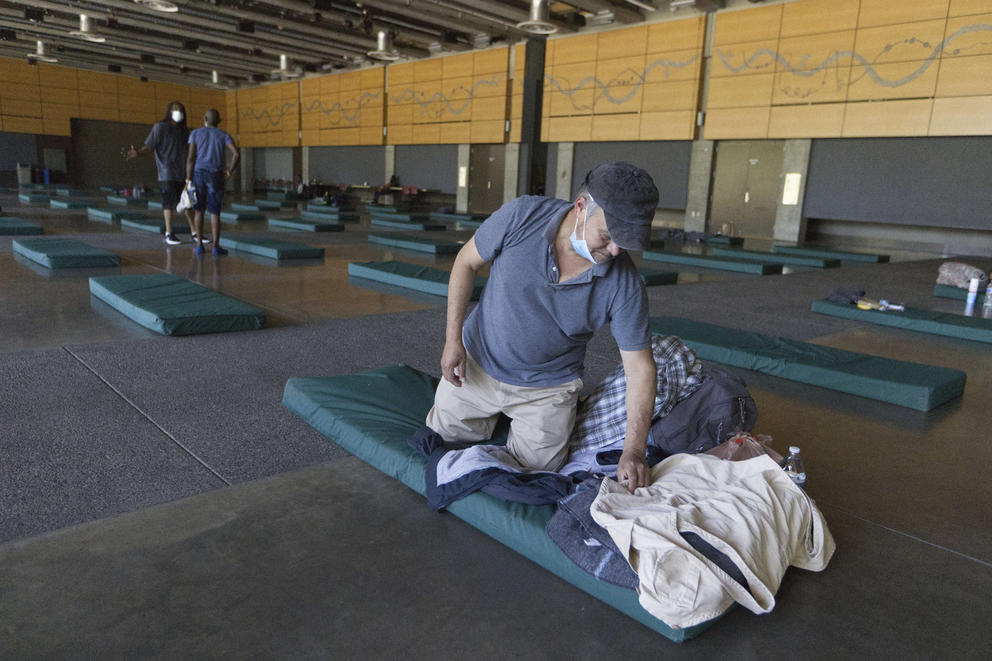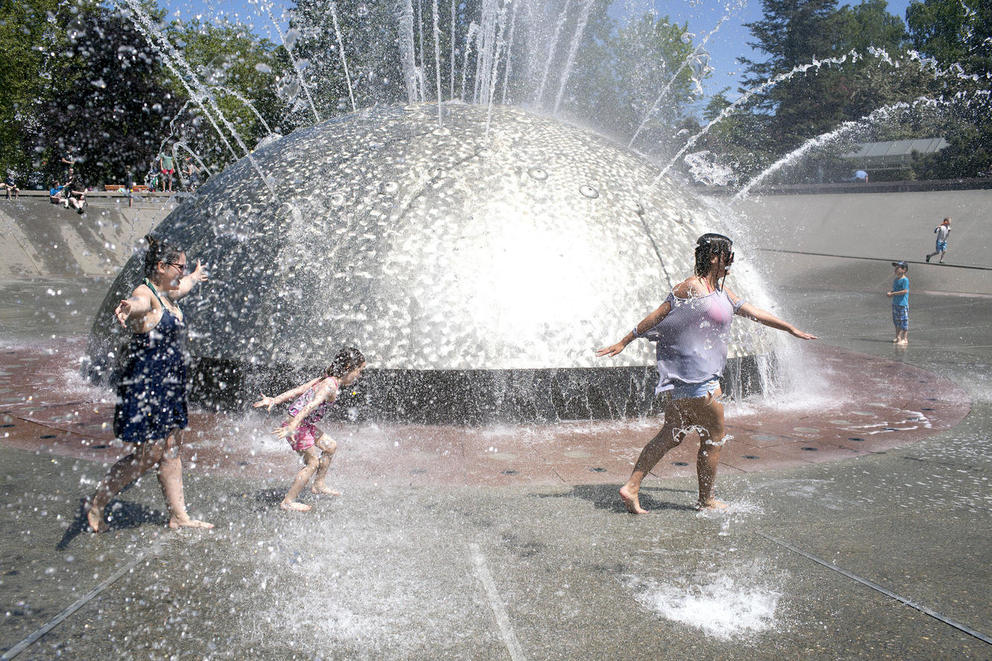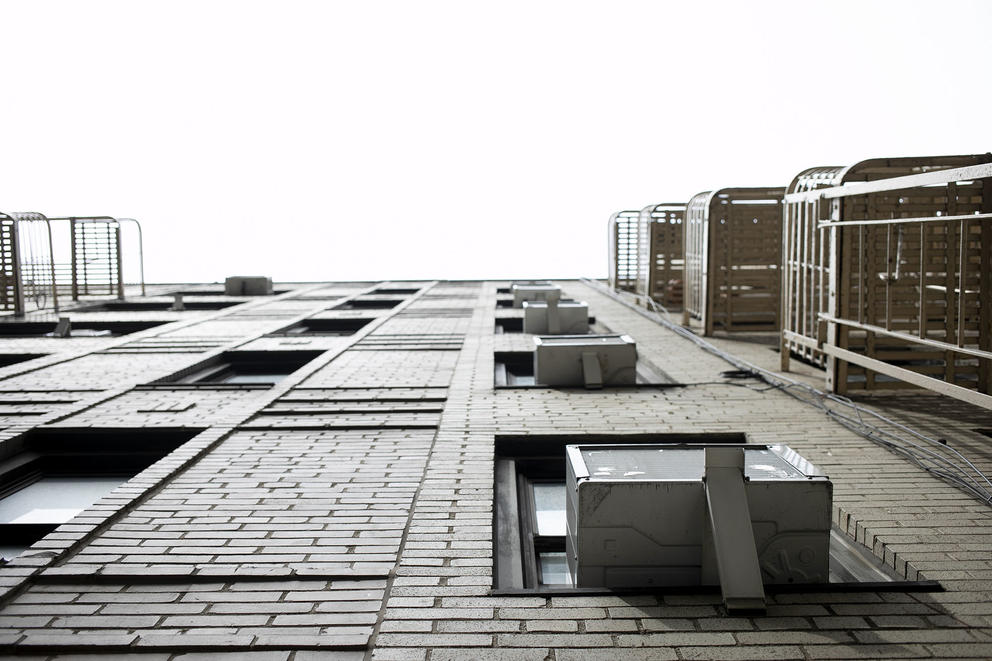Plans to help Seattle and King County deal with climate change year-round range from from planting more trees to decarbonizing transit and forcing businesses to use cleaner energy. The ideas aren’t new, but the energy behind them seems to be.
“There are a lot more people in leadership positions aware of the risks, and there are a lot more people in leadership positions committing to action,” says University of Washington researcher Dr. Tania Busch-Isaksen, who has been at the vanguard of research into the health impacts of extreme heat and how public health is adapting to climate change.
The county recently announced plans to develop an Extreme Heat Mitigation Plan, to be deployed next year.
“A tree isn’t useful for 20 years in terms of providing a canopy [that offers shade]. In the meantime, we’ve got to do something,” says Lucia Schmit of the Seattle Office of Emergency Management. “[And] we're fighting against Seattle's entire history of development.”
The city, county and extreme heat researchers have identified a number of ways that government agencies can help us better withstand an extreme heat event if it happened today — and ways we can better protect ourselves.
What could have gone better
The way we receive information about emergencies must change, officials learned in the aftermath of last year’s heat events.
For King County Office of Emergency Management’s Brendan McCluskey, communications were a pain point, namely helping people understand the extent of the threat and the resources available to them. “I've been doing this for 30 years and every event, no matter what it is, how big or how small, communication is always an issue,” he says.
In response, emergency managers and city and county agencies are planning to start their messaging to the public sooner, send more frequent messages and collaborate faster internally through the county’s Joint Information System.
This, in part, involves simply adjusting the way emergency professionals think of what qualifies as dangerous heat. New this year, the county is basing its actions on the National Weather Service’s HeatRisk Values scale. In addition to temperature, this scale takes into account things like how long the heat is expected to stay elevated, how some populations like the elderly are more vulnerable and the seasonal timing of a heat wave (it can take people two weeks to acclimate to higher temperatures).
Busch-Isaksen says that while many of us think about heat waves as being triple-digit temperatures, “We have found that the mid-80s, with a bit of humidity, is where there’s a threshold that starts seeing mortality increase.”
“High temps early in the summer, when people aren’t yet acclimated to hot weather, can be more dangerous than similar temps late in the summer,” Kate Cole of Public Health — Seattle & King County says via email. The weather service rubric offers clear guidance about when to sound the alarm, and for which populations. Different groups of people have different levels of risk, so vulnerable groups might need to take action when others don’t.
The King County Office of Emergency Management has added mobile phone emergency alerts to its toolkit. In an emergency, the agency can send out messages to everyone with a phone in a geographic area. “Generally those alerts are only for real life-threatening, life-and-death situations. And clearly the heat emergency is one of those situations,” McCluskey says.
Emergency alerts can’t be sent yet in all 170 languages spoken in King County, but the county has prepared its Trusted Partner Network to help with emergency message translations. Emergency alerts can be sent in nine languages, reaching the majority of people for whom English is not their first language. A Community Communications Network spanning more than 700 local organizations will receive information in at least 18 languages in a crisis.
Staff are also telling everyone who will listen about the KCEmergency.com website, which last summer provided nearly 35,000 people with information about cooling center locations and hours.
Making people aware of how to identify and handle risk well before an emergency is also important. Public Health and its partner agencies are working to do that with pamphlets and instructional comics that help people identify their heat risk and what to do to stay safe in heat. Busch-Isaksen — who has helped King County develop these messages — says the county has made huge strides here.
The biggest challenge, Busch-Isaksen says, is communicating risk to people who may not realize or see themselves as vulnerable to extreme heat: people with underlying health conditions (like diabetes) that affect thermoregulation, or people over the age of 45 — yes, 45.
“Being in that age group now myself, I don't think of myself as elderly, nor do I think of myself as particularly vulnerable,” Busch-Isaksen says. “But I do need to be cognizant of the fact that my [body] reacts differently to heat than maybe somebody in their 20s.”
Stressed hospital resources
Dr. Steve Mitchell is the medical director of the Washington Medical Coordination Center and emergency room director of UW Medicine. He says the sheer influx of patients to one hospital during the June 2021 heat wave — paired with understaffing during the pandemic — stressed hospital resources.
Emergency medical providers saw Valley Medical Center in Renton fielding a disproportionate number of patients. The hospital became close to running out of ventilators, but Mitchell says it now has a plan in place if Valley Medical gets close to that threshold again.
Better communication between hospitals and 911 dispatch to monitor trends will be key, Mitchell says.
Even so, today every hospital is at, over or near capacity and experiencing continued staffing challenges. “The margin for turning it into a crisis is so much thinner than it ever used to be pre-pandemic,” Mitchell says.
Using cooling centers
At least 23 King County cities opened cooling shelters over the course of June 2021, with library systems, YMCAs, and even Petco stores offering shelter. King County Metro spread reminders that its buses are air-conditioned.
However, in Seattle, only the Lake City Community Center saw meaningful use, says Kate Hutton with Seattle's Office of Emergency Management. The pandemic is probably to blame, as many people didn’t feel safe being indoors with others.
Hutton says the city is more agile at staffing cooling centers than it used to be, despite staffing shortages. Some city employees have their managers’ consent to staff cooling centers when needed. The city is also hiring a new full-time emergency manager.
By interviewing people who are unhoused, elderly or primary caregivers of small children, Seattle learned people didn’t feel comfortable taking advantage of public spaces. They expressed a desire for strategies to stay cool wherever they’re already spending time — in their own home or an encampment.
Cooling centers will still be a big part of the response, given low access to air conditioning — only 44% of homes have it. But, Schmit says, “I think it's much more about helping people become cooler in their regular lives and a cooling center is not part of your regular life.”
If cooling centers are available, people want them tailored to their needs and shared with people in similar situations. Parents, for instance, desire children’s play areas. Many people prefer outdoor offerings like sprinklers at Seattle Parks and Recreation sites, so the city is trying to make that part of its response, as well as other forms of entertainment, like movie nights.
Many community centers that could be cooling centers lack cooling.
“It’s not just a matter of adding an air conditioner when you have entire walls of south-facing windows,” Schmit says. Four of 26 community centers in Seattle have air conditioning, and in two of those facilities, just one room is equipped with it. Structural changes need to happen before many of the other community centers can even have air conditioning installed. Many community centers that do have cooling, like libraries, weren’t designed for the purpose of being emergency refuges.
Library employees are increasingly de facto emergency responders in extreme weather, while libraries experience a staffing shortage affecting open hours.
Addressing the gaps
Gaps in information and services are big obstacles to improving the city and county’s response to extreme heat.
For instance, there is no list of cooling centers that are guaranteed to be available during an emergency. Few cooling centers are available at night, when unhoused community members still need a safe space. Emergency alerts aren’t available in all the languages spoken in the county. And staffing for cooling centers is unstable.
Government agencies are working on solutions for all of these issues, hoping for long-term climate-resilient strategies to cool the city before it gets too hot. The work won’t serve us in an imminent crisis, but will help down the line, not just with heat, but also to make the area more resilient to fire, smoke and other disasters.
“The goal is to strengthen short-term actions needed to cope with heat during a heat wave, while also looking at ways to adapt our built environments to be able to better handle heat,” said Lara Whitely Binder, King County’s climate preparedness program manager, during a recent press conference. The plan is expected to loop in the county’s tree-planting efforts, as well as increasing access to public green space, evaluating planning policies and codes, creating affordable opportunities to help people cool their homes and expanding access to money to help people make their homes more energy efficient.
The county applied to and was selected for a Building Resilient Infrastructure Communities Grant from the Federal Emergency Management Agency to support the plan, but has not yet received the $120,737 attached to it.
Sarah Brandt of 3 Million Trees, the county’s plan to boost and protect shade-providing tree canopy, says that project is already making progress. It had planted nearly 123,000 trees as of April 2022 since beginning planting in 2021, with a goal of planting 500,000 by the end of 2025. The project also has protected forests and natural areas equivalent to nearly 418,000 trees. The program doesn’t yet have a public-facing map of where it has planted trees.
As part of Seattle’s efforts to electrify its buildings by 2035, the city is focusing on adding heat pumps to buildings that can provide cooling to communities during heat events. Kristin Brown with the city’s Office of Sustainability & Environment says two community-serving facilities were recently equipped with heat pumps, and six libraries and community centers are set to be upgraded this year.
King County Councilmember Girmay Zahilay recently put forward a motion asking for a clear operations plan showing how and where the county will activate cooling centers. It asked for associated costs, with a focus on vulnerable groups.
Emergency operations staff are answering these questions, as well as expanding the network of cooling center providers — with a focus on unhoused residents and people in unincorporated areas. King County’s Office of Emergency Management recently developed an internal extreme heat playbook, outlining the roles and activities taken on by each partner agency, including guidance around opening and operating cooling centers.
Zahilay hopes the plan he’s advocating for would add clarity to the issue. “What I'm looking for is something that looks like a map that shows a regional network of indoor spaces that can become activated immediately and stay open through the whole time we're having extreme weather,” he says.
New this year, the King County Regional Homelessness Authority has taken charge of emergency response for unhoused neighbors. The agency’s Anne Martens says the authority is finalizing a severe weather response plan. “We're waiting on some final approvals. I would call this one of our major progress points on improving the crisis response system,” she says.
The heat dome that wasn’t
The June 2022 temperature spikes luckily weren’t the testing ground they could have been for some of these new response policies. With shorter and less intense bouts of heat and lower overnight temperatures, the period of high heat at the end of June 2022 was far less damaging than the June 2021 heat dome. Public Health reported no heat-related deaths in the period between June 25 and 28, 2022, when temperatures reached 91 degrees Fahrenheit. There were also 49 emergency department visits for heat-related illness over the course of the month, compared with 624 visits in June 2021 over the same period.
The King County Office of Emergency Management didn’t activate its emergency operations center this June but did review plans and processes for extreme heat. It also discussed future plans with Public Health and the National Weather Service and reminded city and county agencies to stay vigilant to heat. Coincidentally, Seattle likely would have been in a good position to respond, as its emergency operations center was activated for the Pride parade, Hutton says.
“We are likely to see additional, possibly more severe heat waves this summer, which will test the draft plans and new response strategies more fully than this past heat event,” Hutton says.





